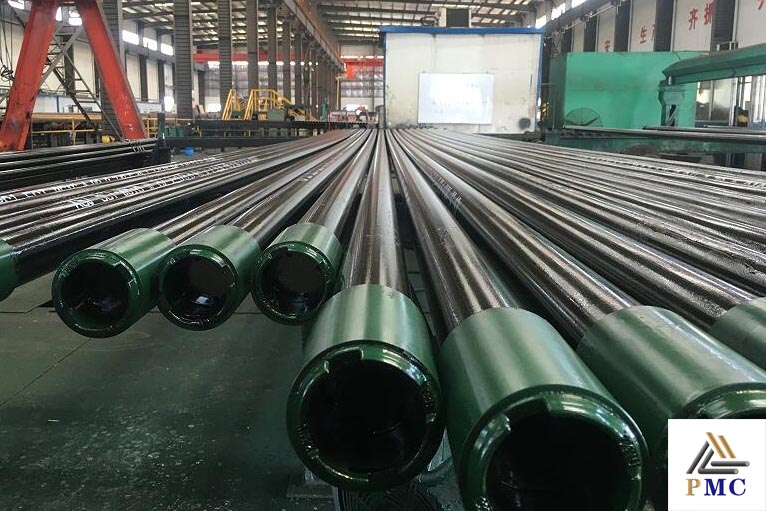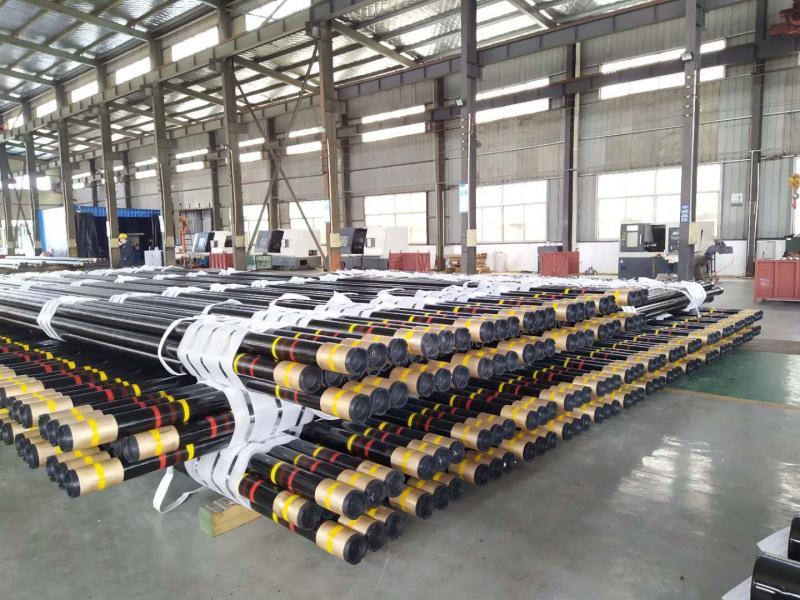
What is a Casing Pipe?
The depth of the casing casing is basically the depth of the well.
The function of the oil casing is the passage of oil and gas to the ground, which isolates the oil and gas from the entire formation to ensure that the oil and gas pressure does not leak. After the oil and gas wells are transferred into production, the quality of the oil casings must be guaranteed to maintain a certain number of years of exploitation.
The cementing quality of the oil casing is related to the exploration well, which is the key to oil and gas testing. On the other hand, it is related to the production well, which directly affects the life of the well.The cement sealing height between the oil casing and the borehole wall is at least 500 m above the oil and gas layer or 200 m above the upper casing.
The main difference between tubing and casing:
Tubing is a tube used in oil wells for oil recovery, gas production, water injection and acid fracturing.The oil casing is a casing of oil layer used when the drilling is drilled to the target layer (oil and gas). It is mainly used for pipes that seal the oil and gas layers and the upper exposed formation. The inside of the casing is an oil layer.

Casing is a series of steel pipes that are run into a drilled oil well to stabilize the well, keep contaminants and water out of the oil stream, and prevent oil from leaching into the groundwater. Casing is installed in layers, in sections of decreasing diameter that are joined together to form casing strings. The five types of casing string are conductor casing, surface casing, intermediate casing, casing liner, and production casing.
Casing is typically made from carbon steel, but as the primary structural component of the well the grade of steel used to make the casing, and the specifications of the finished material, are very important.
Most countries follow American Petroleum Institute (API) standards for the design, manufacturing, testing, and transportation of oil and gas casing used in wells that will be hydraulically fractured. According to API’s Hydraulic Fracturing Operations—Well Construction and Integrity Guidelines, casing must meet strict requirements for compression, tension, collapse, and burst resistance, quality, and consistency. Well casing should withstand hydraulic fracturing pressure, production pressures, and corrosive conditions. Used or reconditioned casing should meet the same API performance requirements as new casing.

Once the casing is in place, tubing is run into the casing to transport the oil or gas. Both casing and tubing are manufactured to certain diameters and wall thicknesses. The Society of Petroleum Engineer’s PetroWIKI site describes the tubing manufacturing process:
API specifies seamless or electric-weld processes for tubing manufacture. Seamless pipe is defined as a wrought steel tubular product made without a welded seam. It is manufactured by hot-working steel or, if necessary, by subsequently cold-finishing the hot-worked product to produce the desired shape, dimensions, and properties. Because of the nature of the manufacturing, the cross section of the tubing wall area may be slightly eccentric and the tubing slightly oval and not perfectly straight.
Electric-welded pipe has one longitudinal seam formed by electric-resistance or electric-induction welding without the addition of filler metal. The edges to be welded are pressed together mechanically, and the heat for welding is generated by the resistance to flow of electric current. The weld seam of electric welded pipe is heat-treated after welding to a minimum temperature of 1,000°F or processed so that no untempered martensite remains.
The spiral and longitudinal welded tubes used in transportation of petroleum are produced from hot working and are made by rolling steel into thin strips or plates. Hot rolling occurs at very high temperatures, above the recrystallization temperature of the material, producing malleable steel that can be formed in a variety of shapes. Cold-formed steel is made by roll forming, a metal forming process in which a sheet of metal is pressed through a pair of rolls to reduce thickness, increase strength and improve surface finish.
Online metal thickness gauges for hot- and cold-rolling mills provide precise, real-time measurements to ensure the finished products meet the exact specifications for the environment in which they function. X-ray gauges are the optimal thickness gauge technology to provide the speed and accuracy required to operate a hot or cold rolling mill. X-ray based sensor systems provide extremely accurate high speed/low noise measurements, permitting producers to realize material savings and quality improvements.
Tips: Petroleum casing pipes can be divided into different steel grades according to the strength of the steel itself, namely J55, K55, N80, L80, C90, T95, P110, Q125, V150, etc. Different well conditions and depths have different steel grades. In corrosive environments, the casing itself is also required to have corrosion resistance, and in places with complex geological conditions, it is also required to have anti-collapse performance.
Read more: What are the Grades of OCTG Casing Material?


